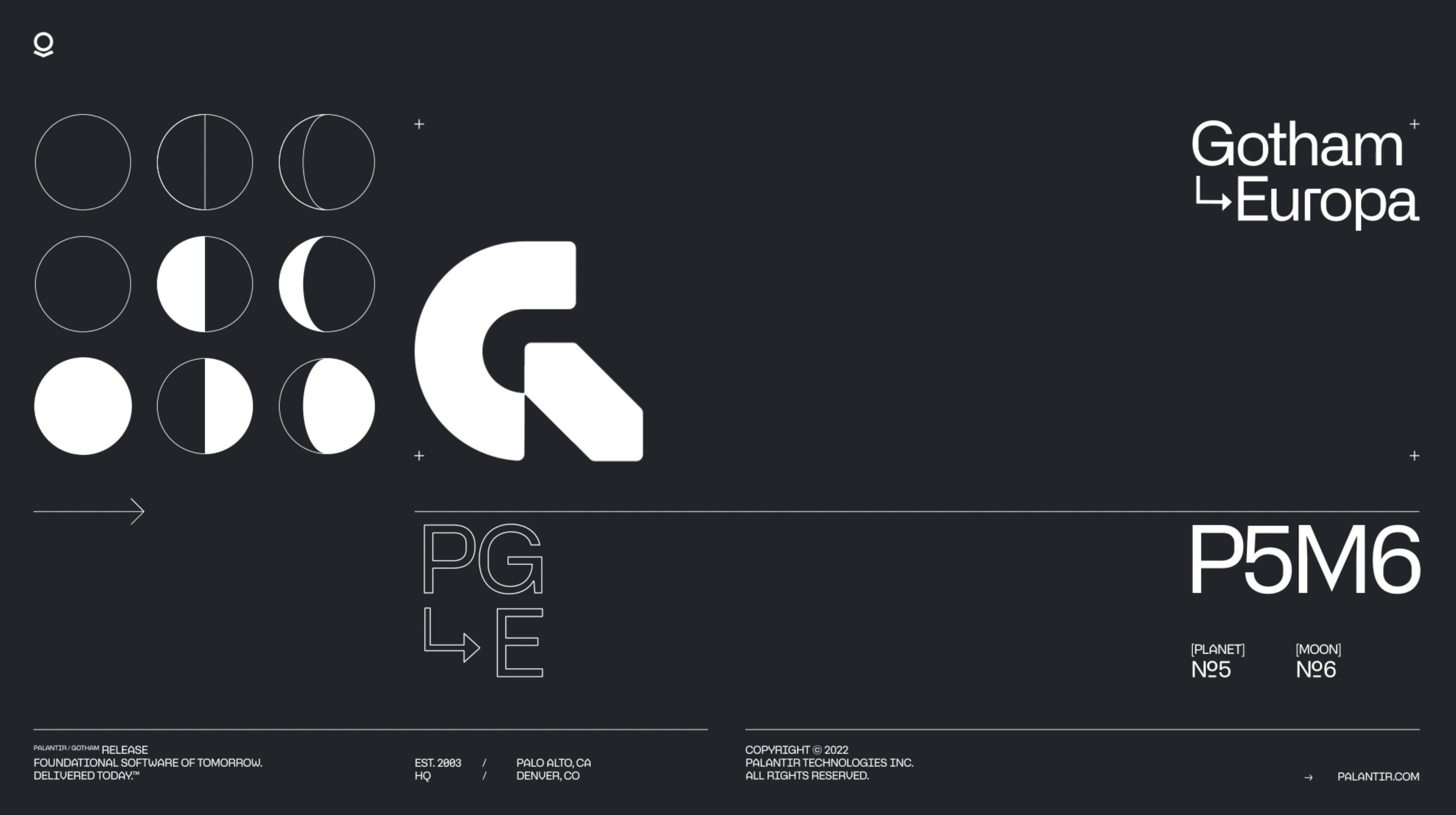Palantir Gotham, Gaia
Product Design, Project Management
As my full-time role out of school, Palantir was one of the most challenging environments I had ever worked in. My strongest areas of growth were in workplace communication, stamina management, project management, and product design in the context of complex product ecosystems.
Due to the confidential nature of my work, I am unable to share any screenshots or describe any projects in detail. However, I will give an example of one of the more complex projects I worked on.
Product Design, Project Management
As my full-time role out of school, Palantir was one of the most challenging environments I had ever worked in. My strongest areas of growth were in workplace communication, stamina management, project management, and product design in the context of complex product ecosystems.
Due to the confidential nature of my work, I am unable to share any screenshots or describe any projects in detail. However, I will give an example of one of the more complex projects I worked on.

Project Definition
As part of the way our team was structured, my PM was responsible for the problem definition phase of the design project. The provided goal was to design the Core UX of a new product being made to replace a legacy product.
My course of action in this phase was to investigate the legacy product, its active users, and their workflows. Working with my PM and my senior designer, we defined the V0 features and responsible parties of the new product.
Primary Challenge
We needed to create a new product with familiar UX to both legacy and new users that doesn’t conflict with the feature set of existing products.
Ideation Phase
Since the new product would co-exist with our product ecosystem, the ideation space needed to address the following aspects.
We experimented with four main paradigms.
Decision Phase
We decided to embrace a extreme lightweight UX similar to Figjam that positioned the product as a complete overhaul of the legacy product and companion to another product via deep integration of features.
Prototype Phase
There were two parts to the prototype that would comprise the Core UX of the V0 feature set agreed upon in the definition phase.
One would focus on the deep feature integrations with other products. The other would center around the core features of the product itself. As a result, two prototypes were produced and separate meetings were scheduled with stakeholders to discuss necessary adjustments.
Testing Phase
The testing phase comprised of two separate meetings with our stakeholder team of PMs, designers, and client team leads. The outcomes were as follows:
Retrospective
We successfully ran a pseudo design sprint that validated some of our core UX ideas while exposing some issues with the Product positioning in relation to resource allocation and engineering practicality.
Next steps are to do additional UX explorations on the Data Add experience while the PMs discuss a repositioning of the product.
As part of the way our team was structured, my PM was responsible for the problem definition phase of the design project. The provided goal was to design the Core UX of a new product being made to replace a legacy product.
My course of action in this phase was to investigate the legacy product, its active users, and their workflows. Working with my PM and my senior designer, we defined the V0 features and responsible parties of the new product.
Primary Challenge
We needed to create a new product with familiar UX to both legacy and new users that doesn’t conflict with the feature set of existing products.
Ideation Phase
Since the new product would co-exist with our product ecosystem, the ideation space needed to address the following aspects.
- Product Positioning
- Core UX Interactions
- Core UX Flow
- Core UX Elements
We experimented with four main paradigms.
- Inheriting UX from a sibling product
- Inheriting UX from a parent product
- Extreme lightweight UX similar to Figjam
- Modernized UX from legacy product
Decision Phase
We decided to embrace a extreme lightweight UX similar to Figjam that positioned the product as a complete overhaul of the legacy product and companion to another product via deep integration of features.
Prototype Phase
There were two parts to the prototype that would comprise the Core UX of the V0 feature set agreed upon in the definition phase.
One would focus on the deep feature integrations with other products. The other would center around the core features of the product itself. As a result, two prototypes were produced and separate meetings were scheduled with stakeholders to discuss necessary adjustments.
Testing Phase
The testing phase comprised of two separate meetings with our stakeholder team of PMs, designers, and client team leads. The outcomes were as follows:
-
The lightweight approach to the core UX is correct and sufficiently differentiates the product from its siblings in the ecosystem.
-
The lightweight approach makes adding additional features difficult, PMs need to discuss whether the current feature set is sufficient for business purposes.
-
The deep feature integration with a sibling product seems very intuitive and powerful in the ideal state, but the lean structure of the two product teams may make this not feasible, PMs need to discuss priorities here.
- Need additional exploration on the Data Add process for the core UX. Consider the vast amount of data present in our deployment stacks.
Retrospective
We successfully ran a pseudo design sprint that validated some of our core UX ideas while exposing some issues with the Product positioning in relation to resource allocation and engineering practicality.
Next steps are to do additional UX explorations on the Data Add experience while the PMs discuss a repositioning of the product.